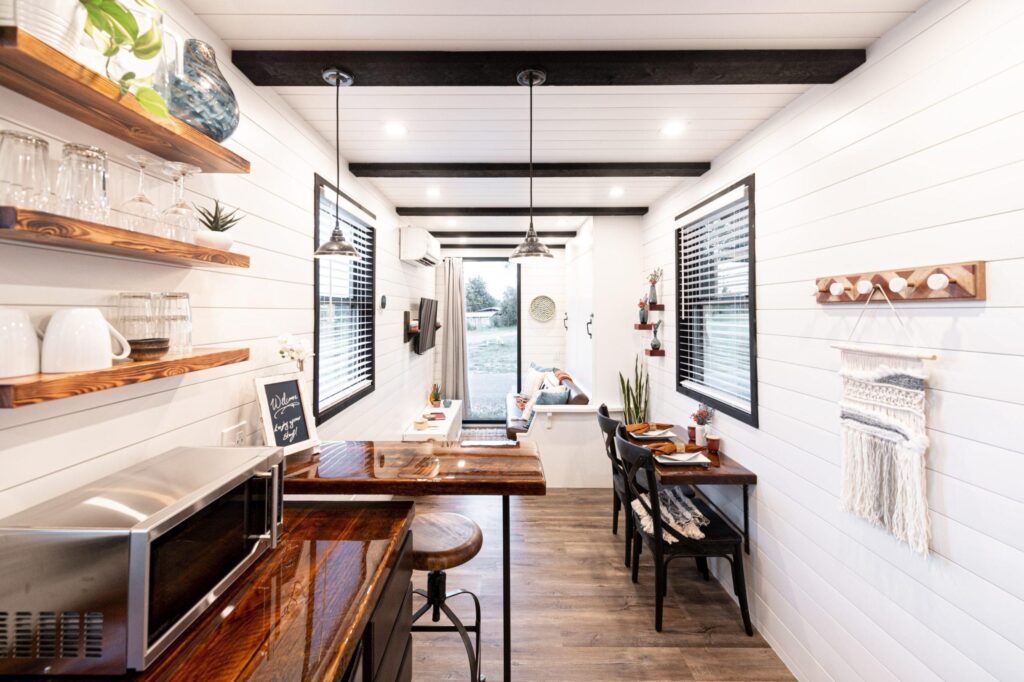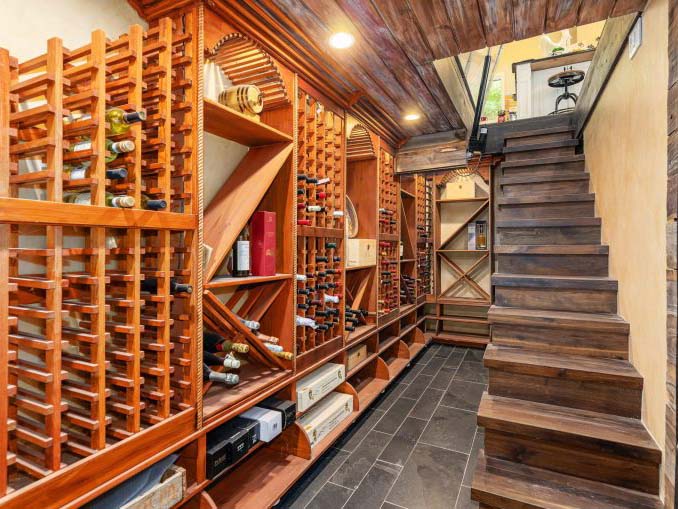
Room additions can be an excellent solution for homeowners who want to maximize their living space without the hassle of moving to a new property. Whether you need an extra bedroom, a home office, or a larger living area, adding a room can provide the space and functionality you desire. This guide will explore the benefits of room additions, cost considerations, creative ideas for small homes, planning and design tips, step-by-step construction guide, project management advice, and compliance regulations to ensure a successful room addition project
Benefits Room Addition
Adding an extra room can make your living space feel new again by giving you the amenities and space you’ve been wanting. Building an extra on to a house from scratch is not easy. Because of this, it’s important to hire a good design-build team and builder to oversee the job and do the work correctly.
Versatile Room Additions
Adding a room can serve multiple purposes like an extra bedroom, office, or hobby space. Its use can change over time.
Accommodate Growing Families
While initial home purchases cater to present needs, room additions ensure space for future family expansion, be it for children or accommodating other relatives. It also allows for guest rooms.
Boost Home Value
Adding rooms can increase a home’s value. For instance, a three-bedroom house is typically worth more than a two-bedroom one. Unique additions like a home office can also be attractive when selling.
Cost-Effective Alternative to Relocating
If you love your current neighborhood but need more space, adding a room can be more economical and less disruptive than moving. While construction might take time, with a skilled contractor, it’s less hassle than relocating.
Enhance Natural Light with Additions
A sunroom can brighten your home, save on energy bills, and offer a comfortable space to enjoy the outdoors. It’s perfect for family gatherings and relaxation.
Room Addition Cost Considerations

Building an extension to a home can be daunting for many homeowners. It’s a complex task to find the right balance between expanding your living space, adding value to your property, and keeping costs in check.
The key to a budget-friendly extension lies in grasping the primary cost determinants. At Lamont Bros., we prioritize educating our clients during the design-build phase, enabling homeowners to make well-informed choices. A primary topic of discussion when considering an extension is its cost and the elements that influence it.
This piece highlights five pivotal elements that typically sway the expense of extending a home. It’s essential to note that these are not the sole factors but are the ones most likely to shape the overall cost of the project. They include:
- Overall Dimensions
- Architectural Style
- Construction Foundations
- Integration Methods
- Choice of Finishing Materials
Room Addition Ideas for Small Homes
Living in a small home doesn’t mean sacrificing the luxury of additional space. There are numerous creative room addition ideas specifically designed for smaller homes. One popular option is to build a vertical room addition, such as a second-story extension. This utilizes the vertical space available without encroaching on your existing outdoor area. Another innovative idea is to convert an underutilized area, such as a garage or attic, into a functional room. This can be a cost-effective way to add a new room without the need for extensive construction.
Lastly, consider the option of a sunroom or conservatory, which can provide a bright and airy space for relaxation and enjoyment.
Room Addition Planning and Design

Adding a room takes careful attention to detail, and planning and design are the most important parts of a successful job. Here is a complete list of all the steps and things to think about:
- Define the Purpose: Before diving into the nitty-gritty, clarify the primary purpose of the new room. Will it serve as a home office, an extra bedroom, a sunroom, or play area for kids? Understanding its function will guide the subsequent design choices.
- Size and Layout:
- Size: Depending on your needs, budget, and available space, determine the size of the addition. It’s wise to anticipate future requirements, so you don’t end up outgrowing the space too soon.
- Layout: Think about the room’s flow and how it will interact with the rest of the house. For instance, if it’s an extra bedroom, ensure it’s easily accessible from a bathroom.
- Structural Considerations:
- Home’s Integrity: Before adding a new room, it’s paramount to assess the existing structure of your home. This ensures the foundation can bear the weight of the addition, and there’s no risk of compromising the building’s stability.
- Consultation: Engage with structural engineers or professionals who can provide expert opinions on the feasibility of your project.
- Design Collaboration:
- Architect/Designer Partnership: Collaborate with an experienced architect or designer who can bring your vision to life. They’ll not only help in sketching out a visual representation but also ensure that the design is practical and functional.
- Material Selection: From flooring to roofing and everything in between, choose materials that align with your aesthetic preferences, are durable, and fit within your budget.
- Permit and Regulations:
- Research: Different localities have varying regulations about room additions. It’s essential to familiarize yourself with these to avoid legal hiccups.
- Acquire Necessary Permits: Before construction, ensure you’ve secured all the necessary permits. This might include building, zoning, or environmental permits.
- Budgeting and Costing:
- Cost Estimation: Based on the design plan, materials, and labor, get a rough estimate of the project cost.
- Contingency Funds: Always set aside a buffer amount for unforeseen expenses. This ensures that unexpected costs don’t stall the project.
- Integration with Existing Structure: The new addition should not be an afterthought. Ensure it seamlessly blends with the existing design, both externally and internally. This might mean matching rooflines, exterior finishes, or even interior decor.
How to Build a Room Addition - Step-by-Step Guide
A successful home addition involves seamlessly integrating multiple stages of the design-build process. From conceptualizing the design to securing necessary permits, gathering materials, and the actual construction, every stage must be meticulously managed. Here are five primary steps to guide you through the home addition journey:
Evaluate Your Needs and Set a Budget
Begin by identifying your goals for the addition. Whether you’re looking to create an additional entertaining space, expand your kitchen, or add a primary bedroom and bathroom, defining your objectives is crucial. Next, assess your budget, keeping in mind that home additions can be costly. It’s essential to have a clear financial plan, and if you’re considering financing options, now’s the time to research. Firms like Meadowlark can guide you through this phase.
Choose a Contractor or a Design + Build Firm
The success of your project heavily depends on your choice of a contractor. An experienced residential contractor or a design + build firm can ensure quality, timeliness, and adherence to your vision. It’s vital to select a licensed and insured contractor. Opting for a comprehensive firm like Meadowlark Design + Build offers added advantages. Their holistic approach includes design consultation, construction drawings, and project management. Over the years, they’ve built a reputation for quality, cost control, and punctuality.
Design Finalization, Material Selection, and Permit Acquisition
Once you’ve chosen your contractor or design + build firm and finalized your budget, you might think you’re ready for construction. However, with current supply chain challenges, ensure that all materials—be it cabinets, tiles, flooring, or appliances—are chosen and ordered in advance. Before breaking ground, acquire the necessary permits. Familiarize yourself with local building codes and, if applicable, housing association regulations. Also, plan your living arrangements during construction.
Site Preparation and Construction Commencement
With everything in place, the actual construction begins. Key stages include:
- Laying the foundation
- Framing the structure
- Constructing floors, walls, and roof, followed by exterior cladding
- Installing windows and doors
- Roughing in utilities like electrical, plumbing, and HVAC
- Insulating and drywallingFinalizing with cabinetry, flooring, fixtures, lighting, and electronics
Settling In and Post-Completion
Once the construction is complete, you can move back in. However, you might notice minor adjustments or fixes needed. Most contractors, including design + build firms, will address these. Companies like Meadowlark even offer extended warranties and post-completion support.
Considering a home addition? Start by defining your needs and setting a realistic budget.
Room Addition Tips for a Successful Project

To ensure a successful room addition project, consider the following tips:
- Hire a reputable and experienced contractor who specializes in room additions.
- Communicate your expectations and requirements to the contractor.
- Set a realistic budget and schedule, and stick to them.
- Regularly communicate with the contractor and project manager to stay informed about the progress.
- Stay involved in the decision-making process and provide input when necessary.
- Regularly inspect the construction site to ensure quality and adherence to the design plan.
- Be prepared for unexpected challenges and delays, and maintain a flexible mindset.
- Keep an open line of communication with your neighbors to minimize disruptions.
- Plan for any necessary temporary accommodations during the construction period.
- Enjoy the process and look forward to the exciting transformation of your home.
Room Addition Installation Process
During the room addition installation process, it is essential to have a clear understanding of the construction timeline and the various stages involved. This will help you stay organized and ensure the project stays on track. The installation process typically starts with site preparation, followed by the construction of the foundation and the framing of the new walls and roof.
Once the structural elements are in place, windows, doors, and insulation are installed. The electrical and plumbing systems are installed, and the interior finishes, such as drywall, flooring, and paint, are completed. Finally, fixtures and fittings are installed, and a final inspection is conducted to ensure compliance with building codes.
Room Addition Guide to Ensure Quality and Compliance
To ensure that your room addition meets quality standards and complies with building codes and regulations, it is crucial to work with professionals who have extensive experience in room addition construction. Hire a licensed contractor who is knowledgeable about local building codes and can provide the necessary permits and approvals. Regularly communicate with the contractor and project manager to ensure that all work is carried out according to the design plan and specifications.
Conduct regular inspections to verify the quality of workmanship and address any issues promptly. By following these guidelines, you can have confidence in the quality and compliance of your room addition project.
Conclusion and Final Thoughts

Adding a room to your home can be a transformative experience, providing you with the space and functionality you desire. By carefully considering the benefits, cost considerations, and design options, you can embark on a room addition project with confidence.
Remember to plan meticulously, work with professionals, and stay involved throughout the construction process. With proper planning, budgeting, and execution, your room addition project can be a resounding success, adding value and enjoyment to your home for years.
Contact Livermore ADU Builder & Room Addition, for your Room Addition Project
If you’re ready to embark on a room addition project, Livermore ADU Builder & Room Addition is here to help. With their expertise and experience, they can guide you through every step of the process, from initial design to final construction. Contact them today to transform your space and create the home of your dreams.

